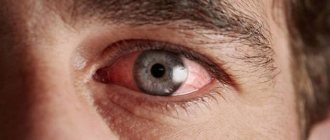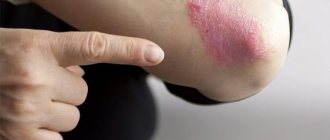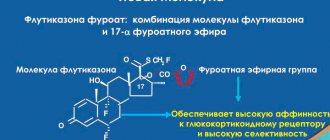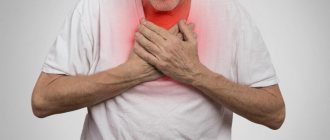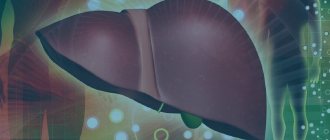Skin characteristics and immunity
The human skin is an independent organ that performs various functions.
The dense surface layer of the skin primarily prevents pathogens from penetrating into the underlying tissues. Also on the surface of the skin there are more receptors that inform the brain about environmental temperature, tactile contacts, pain and other types of sensitivity. Damage to the skin is always a risk factor for infection or inflammation. Additional functions of the skin:
- protection of underlying tissues from external influences;
- maintaining a fixed body temperature;
- removal of metabolic products through sweat;
- maintaining a constant internal environment of the body;
- external breathing;
- formation of vitamin D, necessary for metabolism and organ development;
- blood deposition.
The outermost portion of the skin is the stratified epidermis. The keratinized cells of the upper layer of the epidermis perform a barrier and protective function. The lower layers of the epidermis regularly renew the cellular composition of the tissue. The middle layer of the skin is represented by the dermis, containing hair follicles, blood vessels, smooth muscles, sweat and sebaceous glands. The lowest part of the skin is the subcutaneous tissue. Adipose tissue prevents hypothermia of the body and protects internal organs from mechanical stress.
Cells of the immune system are present in the skin. The task of immunity in this anatomical region is to quickly prevent the invasion of pathogenic microorganisms into internal organs. In addition, the protective system protects the body from harmful chemicals. At the same time, due to congenital abnormalities, the immune system can react to certain neutral substances and cause an inflammatory response.
Selected species
The term “toxicoderma” refers to any type of skin damage that occurs when an allergen spreads through the bloodstream. At the same time, doctors are aware of individual syndromes characterized by such a pathological reaction.
The most dangerous forms of the disease:
- Stevens-Johnson syndrome is a severe lesion of the skin and mucous membranes of the genitourinary organs, mouth and eyes. Multiple exudative erythemas form on the surface of the patient's skin. The disease is manifested by an increase in body temperature, tachycardia, weakness, headache and other symptoms. In children, this condition often develops against the background of infectious diseases.
- Lyell's syndrome is a life-threatening condition manifested by damage to the skin, mucous membranes and internal organs. External symptoms of the disease include peeling of the skin and the appearance of blisters filled with exudate. General intoxication of the body and the addition of infection can lead to the death of the patient. The nervous system is affected.
It is important for a doctor to recognize a dangerous form of the disease in time and begin treatment. Often the patient requires intensive care to maintain the functions of vital organs.
Causes
The disease occurs when allergens enter the body along with food, injection solutions and inhaled air. The allergen can also enter the bloodstream through skin contact. The substance that causes an allergic reaction quickly spreads through the body and enters the skin. In rare cases, substances that cause a response from the immune system are formed in internal organs. Doctors include medical alcohol, bleaches, detergents, shampoos, dust, pollen and pesticides as common pathology triggers.
Possible reasons:
- Intoxication of the body with unusual metabolic products formed in the digestive system, kidneys or liver.
- Penetration of a drug that causes an allergy into the body. This can be any route of administration of the medication, including oral and injection.
- Alimentary penetration of the allergen (with food). Most often, foods contain additives that cause a reaction in the immune system.
- Air pollution from certain chemicals. In this case, the provocateurs of the disease quickly penetrate the blood vessels through the respiratory tract.
Congenital allergic reactions are caused by the transmission of certain genes from parents. In this regard, the study of family history plays an important role in diagnosing the disease.
Risk factors
Dermatologists take into account not only the ways in which allergens enter the patient’s body, but also certain forms of predisposition to such a disease. Risk factors may be related to a person's lifestyle, personal history, and genetics.
Possible risk factors:
- Chronic diseases of internal organs, such as gastritis, pancreatitis or glomerulonephritis.
- The presence of diseases associated with pathological reactions of the immune system. These are Crohn's disease, urticaria, bronchial asthma, allergic rhinitis and other ailments.
- Use of untested vaccines and serums.
- Diseases of metabolism and endocrine system.
- Malignant neoplasms.
- Taking antibiotics, aminazine, quinine, corticosteroids and other medications that often cause allergies.
- Features of professional activity that lead to frequent contact with chemicals, such as dyes, varnishes and household chemicals.
- Frequent contact with plants and animals.
- Unfavorable family history due to diseases of the immune system in close relatives.
Taking into account risk factors is important for disease prevention.
At-risk groups
- Children. This category of patients is more likely to experience food intolerance. Special attention should be paid to newborns and early infants. Their skin has not yet undergone full anatomical and functional adaptation to an anhydrous environment, which increases the risk of disease.
- Patients with individual intolerance to foods, drugs, or hereditary predisposition to it.
- Specialists working with toxic substances: pharmacists, doctors, painters, plasterers, car mechanics, jewelers.
- Patients with chronic diseases of various organs and systems, accompanied by metabolic disorders.
- Patients with autoimmune diseases.
Pathogenesis of toxicoderma
Allergens penetrate the body, overcoming natural barriers. Thus, substances that come into contact with the mucous membranes of the respiratory and digestive systems are easily absorbed into the capillaries and distributed throughout all tissues. Also, small organic molecules (haptens), characterized by chemical reactivity, bind to proteins and cause an allergic reaction. In skin cells, haptens activate special receptors and provoke an innate immune response.
In tissues, the immune system recognizes allergens and provokes the production of inflammatory mediators. Cells of the body's defense system also fight allergens and produce anti-inflammatory cytokines that help destroy haptens. The process of destroying allergens is accompanied by characteristic skin reactions, such as the formation of blisters and spotty rashes.
Mechanisms of disease formation that are not related to the body’s defense system:
- A local reaction of a certain substance, characterized by tissue irritation.
- Gradual accumulation of chemicals in the body.
- A deficiency of certain enzymes caused by a genetic mutation.
- Intolerance to a certain drug.
Only through careful diagnosis can the true mechanism of skin lesions be identified in a particular patient.
Toxicoderma
Toxicoderma, or toxic-allergic dermatitis, is an acute inflammation of the skin or mucous membranes that occurs as a result of the entry into the body of allergens and substances that have a toxic effect.
Irritants can penetrate inside in different ways:
- during injection procedures (subcutaneous, intramuscular, intravenous injections, drip administration of drugs);
- when taking substances by mouth;
- by inhalation;
- through the vagina, rectum.
The rate of development of the disease is determined by the concentration of the allergen and the body’s sensitivity to it.
Symptoms
Toxicoderma can manifest itself with a variety of symptoms. Different patients may have different areas of skin lesions and types of pathological formations. Most often, the first signs of inflammation appear in the mucous membrane of the mouth and eyes. Blisters filled with cloudy liquid, papules, vesicles and warts may appear on the surface of the skin. Skin reactions depend on the mechanism of the disease and the specific allergen.
Other symptoms and signs:
- redness and swelling of the skin;
- increase in body temperature;
- breathing problems;
- cardiopalmus;
- dizziness and weakness;
- burning of the skin and mucous membranes;
- pain in joints and muscles;
- anxiety and sleep disturbance;
- headache.
As complications arise, the patient may develop more dangerous symptoms.
Diagnostics
If symptoms of toxicoderma appear, you must make an appointment with a dermatologist or immunologist-allergist. During the consultation, the doctor will ask the patient about the complaints and carefully study the anamnestic data to suggest the cause of the skin changes. Then an initial examination of the skin is carried out, making it possible to assess the nature of the rash. To confirm the diagnosis, the doctor prescribes instrumental and laboratory tests.
Additional diagnostic methods:
- Blood analysis. In the treatment room, a nurse collects venous blood and sends the material to the laboratory. The immunologist will be interested in the ratio and quantity of blood elements. The biochemical composition of plasma also allows us to clarify the form of the disease. If necessary, serological diagnostics for infection are carried out: specialists look for specific antibodies in the blood that are produced by the immune system to fight pathogens.
- Skin scraping or exudate collection. The resulting material is studied in the laboratory. The use of special nutrient media allows a specialist to identify the causative agent of the disease or, conversely, to exclude the infectious nature of the disease. Often, a dermatologist will need to rule out sexually transmitted infections such as syphilis.
- Skin tests. The dermatologist places a small amount of the allergen on the surface of the patient's skin and observes the tissue reaction. The appearance of characteristic signs of allergy indicates the body's sensitivity to a certain substance. With toxicoderma, skin tests often do not reveal pathology.
- Provocative tests are the introduction of a suspected provocateur of the disease into the body. The doctor uses the minimum dosage. When symptoms of toxicoderma appear, the patient is immediately given medicine. This diagnostic method is not performed if there is a risk of a severe allergic reaction.
- Allergy tests outside the patient's body. For this purpose, blood is drawn. A test for basophil degranulation when exposed to a specific substance can confirm the diagnosis.
- Biopsy of skin lesions. The dermatologist removes a small area of damaged skin. Histological examination of the material reveals a large number of lymphocytes and eosinophils in the tissue.
- Examination of internal organs. If indicated, the doctor prescribes electrocardiography, ultrasound examination and computed tomography. In most cases, it is necessary to evaluate the condition of the cardiovascular system, kidneys and liver.
Diagnosing toxicoderma can be quite a complex undertaking, requiring the exclusion of many other diseases with similar symptoms. If necessary, the doctor prescribes the patient a consultation with a cardiologist, nephrologist or infectious disease specialist. It is important to suggest a differential diagnosis in time.
Our doctors
Shundeva Oksana Veniaminovna
Allergist, doctor of the highest category
Experience 39 years
Make an appointment
Orlova Tatyana Vladimirovna
Doctor - allergist-immunologist, pulmonologist, doctor of the highest category
Experience 38 years
Make an appointment
Treatment
The primary goal in treatment is to stop contact of the allergen with the patient's body. In severe cases, it is also necessary to eliminate the symptoms of the disease by suppressing the allergic reaction. Often, additional therapeutic procedures are required to cleanse the body of toxins. Maintaining the functions of vital organs allows you to eliminate the consequences of the most dangerous forms of the disease.
Main methods of treatment:
- Cleansing the body of toxins. Depending on the indications, the doctor prescribes diuretics and desensitizing drugs to the patient. These drugs, administered by injection, help relieve symptoms of the disease. If necessary, the patient is prescribed a cleansing enema. It is important to consider the cause of the disease, since in case of drug-induced toxicoderma, desensitizing solutions may be contraindicated.
- Suppression of an allergic reaction. The dermatologist prescribes antihistamines to the patient to prevent the effect of the inflammatory mediator on the tissue.
- Efferent therapy for severe intoxication of the body. The patient's circulatory system is connected to a special device that removes unwanted chemicals. At the same time, solutions of corticosteroids, dextran and blood plasma proteins are administered intravenously to the patient. Antibiotics are prescribed if necessary.
- Topical medications for treating damaged skin. Depending on the indications, the dermatologist may prescribe topical medications based on corticosteroids and other anti-inflammatory medications. Gels and ointments improve the condition of the skin, but do not affect the root cause of the disease.
In severe cases, treatment must be carried out in a hospital. Dangerous forms of pathology, such as Lyell's syndrome, may require resuscitation measures. After the condition has stabilized, the doctor prescribes the patient a hypoallergenic diet, antihistamines and other medications for constant use.
Treatment of toxicoderma
Toxicoderma, the symptoms and treatment of which directly depend on the type, severity of the disease, the general condition of the patient and the extent of the process, is often found in the clinical picture. The first step in treating toxicoderma is to prevent further exposure to the allergen on the body. For this purpose, laxatives and diuretics are prescribed, cleansing enemas are given, desensitizing solutions of sodium thiosulfate and calcium chloride are administered intravenously, and the patient is given antihistamines. For toxicoderma caused by the use of sulfonamide drugs, the administration of sodium thiosulfate to patients is strictly contraindicated. People with severe forms of the disease are prescribed extracorporeal blood purification methods, including hemosorption, cascade plasma filtration, membrane plasmaphoresis, and cryoapheresis. Their treatment can be carried out exclusively in a hospital; it consists of the doctor prescribing glucocorticosteroids, intravenous infusions of rheopolyglucin, plasma or blood albumin, prophylactic antibiotic therapy, as well as maintaining satisfactory liver and kidney function.
Local therapy depends directly on the morphological characteristics of the lesions affected by toxicoderma of the skin areas. Various powders, glucocorticosteroid ointments, anti-inflammatory drugs, and topical antipruritic drugs are used. The patient's areas of weeping are treated with aniline dyes, disinfectants and astringents.
It is very important not to delay seeing a doctor. Timely seeking qualified help guarantees a quick and complete recovery. You should not neglect your health, you must follow the rules of personal hygiene and then you can be sure that toxicoderma will bypass you.
Complications
The hematogenous mechanism of spread of allergens is dangerous due to severe intoxication of the body and disruption of the functions of internal organs. If not treated promptly, complications may occur. In most cases, negative consequences are associated with the cardiovascular and excretory systems.
Possible complications:
- Inflammation of the muscular lining of the heart, manifested by shortness of breath, rapid heartbeat, weakness and general malaise.
- Renal dysfunction.
- Damage to liver tissue.
- Peeling of skin, as well as loss of hair and nails.
- Impaired blood supply to internal organs.
- The occurrence of an infectious disease.
- Toxic-septic shock.
Stopping an allergic reaction in the first hours after the onset of the disease usually prevents the development of dangerous complications.
Prevention
Any diseases of the skin and internal organs that arise due to sensitization of the immune system can be successfully prevented. An immunologist’s medical recommendations usually relate to the patient’s lifestyle and diet.
Basic preventive recommendations:
- consumption of hypoallergenic foods;
- taking medications only under medical supervision;
- timely treatment of chronic diseases, including infection;
- ensuring quick access to antihistamines for diagnosed allergies;
- examination by an allergist and immunologist in the presence of pathologies of the immune system.
Compliance with all of the above recommendations significantly reduces the risk of initial occurrence of the disease and relapse. It is important to know the symptoms of an allergic reaction and always have emergency medications with you. If allergies are seasonal, the patient should be especially careful.
Drug toxicoderma: treatment and prevention
E.V. FAYZULLINA, Yu.V. DAVYDOV
Kazan State Medical University
Fayzullina Elena Vladimirovna
Doctor of Medical Sciences, Professor of the Department of Dermatovenerology
420012, Kazan, st. Butlerova, 49, tel., e-mail
According to available data, the prevalence of adverse reactions due to the use of drugs depends on many factors: the quantitative growth and expansion of the range of the pharmacological market, the patient population (gender, age, concomitant diseases, profession, diet, etc.). Mortality from adverse reactions ranks 5th in the world after cardiovascular diseases, lung diseases, cancer, and injuries. The risk of developing toxicoderma for most drugs ranges from 1 to 3%. Toxicoderma is a fairly common and serious type of adverse reaction to drugs; it affects doctors of all specialties and medical institutions of any profile. General principles of treating a patient with toxicoderma: abolition of all medications except vital ones, administration of a fasting break or a hypoallergenic diet, mandatory recording of data on the development of drug allergies in medical records.
Key words: toxicoderma, drugs, adverse reaction, allergic reaction.
EV FAIZULLINA, YV DAVYDOV
Kazan State Medical University
Drug toxicodermatosis:treatment and prevention
According to reports, the incidence of adverse reactions due to the use of drugs depends on many factors: the quantitative growth and a wider variety of pharmacological market and patient population (age, sex, comorbidities, occupation, diet, etc.). Mortality from side reactions takes the 5th place in the world after cardiovascular diseases, pulmonary diseases, cancer, trauma. Risk of toxicodermatosis for most drugs is from 1 to 3%. Toxicodermatosis refers to a widespread and serious types of adverse reactions to drugs, it affects physicians of all specialties and medical facilities of any type. General principles of treatment of the toxicodermatosis patient is to cancel all drugs except vital, the appointment of a absolute diet or a hypoallergenic diet, mandatory fixation of data on the development of drug allergy in the medical notes.
Key words : toxicodermatosis, drug, adverse reaction, allergic reaction.
The problem of complications of drug therapy in the form of toxicodermic reactions is becoming increasingly relevant throughout the world. However, for many reasons, much less attention has been paid to the side effects of drugs than to their medicinal properties. However, such information in the medical literature is far from isolated [1].
According to available data, the prevalence of adverse reactions due to the use of drugs depends on many factors: the quantitative growth and expansion of the range of the pharmacological market, the patient population (gender, age, concomitant diseases, profession, diet, etc.), the characteristics of their treatment (the nature of the drugs, their activity, quantity, compatibility), sensitization of the population to biological and chemical substances, errors of medical personnel and pharmacists, the emergence of a large number of generic drugs with insufficiently studied properties and unproven equivalence to original drugs, widespread and often incorrect advertising of drugs, the use of low-quality and falsified drugs , environmental conditions, lack of a proper pharmacovigilance system [2, 3].
As the number of drugs used to treat various categories of patients increases, the risk of undesirable (adverse) side reactions in them also increases. Thus, before the advent of sulfonamides (late 30s of the twentieth century), complications of drug treatment were observed only in 0.5-1.5% of patients, and now only in patients in the hospital they occur in 15-30% cases [4].
According to WHO (2006), 50 out of 1000 patients hospitalized in a hospital are sent for treatment due to drug complications. In people treated on an outpatient basis, the number of complications from therapy is 2-3%, and in seriously ill patients treated in a hospital - from 6 to 35%, and the increase in hospitalization as a result of adverse reactions ranges from 1 to 5.5 days [5, 6]. According to other authors, drug complications are observed in 10-20% of people taking medications. In the United States, approximately 30% of hospital patients experience one drug complication during treatment, and one in 4 deaths is associated with drug complications [4, 7].
The risk of developing toxicodermic reactions for most drugs ranges from 1 to 3%. Among all side effects, allergic and immunological reactions account for 6-10%. Toxicoderma accounts for 25% of all adverse reactions when using medications [8, 9].
In the clinic, the frequency of adverse reactions to drugs in the form of toxicodermic reactions varies from 1 to 5%, depending on the characteristics of the treatment and the patient population. The frequency of adverse reactions to antitumor cytostatics is 61.8%, to neuroleptics - 40.2%, antituberculosis drugs - 28.4%, analgesics and anesthetics - 10.1%, hormones - 8%, sulfonamides - 5.2%. In 3% of cases, these reactions are the reason for calling a doctor at home. About 5% of people may have a drug allergy to one or even several drugs [5].
The increase in drug complications is facilitated by widespread self-medication, addiction to the same drugs in a number of patients, and the simultaneous use of several drugs without taking into account their possible interaction in the body. Thus, when taking 8 drugs simultaneously, complications of drug therapy occur in 10% of patients, and when taking 16 drugs - in 40% of them. An analysis of cases of polypharmacy in Moscow hospitals showed that only 25% of patients were prescribed less than 5 medications, and 27% of patients received more than 25 medications during treatment [10, 11].
The results of pharmacoepidemiological studies conducted in recent years suggest that underestimation and delayed solution to the problem of toxicoderma are fraught with the development of the most serious consequences [12]. Thus, specially conducted studies have shown that severe, sometimes irreversible complications as a result of drug therapy develop in millions of people. The number of deaths associated with the use of drugs is in the hundreds of thousands. Total annual costs for treatment of preventable complications of pharmacotherapy alone in the United States range from $17 million to $29 million. In the UK, approximately $4 billion is spent annually due to increased hospital stays due to adverse drug side effects. Costs associated with adverse drug reactions range from 5.5 to 17% of the total hospital budget in different countries [13, 14].
Foreign experience in studying this problem also indicates that many drug complications are the result of medical errors. One of the first significant studies of this issue was organized in the USA. Upon its completion in November 1999, a report was compiled entitled: To Err is Human: Improving Safety in Health Care. It noted that between 44,000 and 98,000 people die each year in US hospitals as a result of medication errors. This is more than deaths due to car accidents (43,458), breast cancer (42,497) or AIDS (16,516). According to the data obtained, 7,000 people die annually from errors associated with the incorrect use of medications alone, which is 16% more than the mortality rate due to occupational injuries [15, 7].
Committees for monitoring side effects of drugs, created in Russia, the USA, France, England and other countries, annually register from 5 to 100 thousand only allergic reactions to medications, of which over 1% were fatal. At the beginning of 2002, the general database compiled by the WHO Center for Side Effects of Drugs contained about 2.7 million reports of identified side effects from the use of various medications [2].
According to WHO experts (WHO, 2006), the main reasons for the increase in side effects of drugs are: reducing the time required for expert assessment and accelerating registration processes for new drugs; self-medication and widespread advertising of medicines; constant increase in the number of generic medicines; distribution of biologically active food additives; falsification of medicines; errors of doctors and medical staff [16].
A special place among adverse reactions to drugs is occupied by drug allergies. It occurs in hospitals of various profiles (therapeutic, surgical, gynecological) and accounts for more than 50% of all cases of drug intolerance. Allergic reactions to drugs were detected in 15% of therapeutic patients. The development of serum sickness after preventive vaccinations was noted in 13% of vaccinated people [15]. About 25% of emergency medical team calls are made to patients with drug allergies. Anaphylactic shock occurs in 1 case per 50 thousand patients who used medications. In therapeutic hospitals in Semipalatinsk, toxicoderma was noted in 4% of patients, and in infectious diseases hospitals - 3 times more often. In Germany, the development of drug allergies was noted in 5% of patients; in England, the number of them in hospital ranges from 4 to 15%, of which about 3% usually die. In Vinnitsa, upon examination of the adult population, toxicoderma was diagnosed in 2.5% of cases [4, 17].
Among medical workers, toxicoderma occurs 10 times more often than among people in other professions (in 26-33% of doctors). Among medical workers in Belarus, drug allergies were registered in 59%, among medical school students - in 9.7%, and among patients - in 2.5% of cases [18].
The prevalence of toxicoderma varies widely (from 1 to 30% or more), but these data require serious analysis, since the presence and prevalence of reactions to placebo are not taken into account, differential diagnosis between true drug allergic reactions and other types of adverse reactions to drugs has not been established . Thus, according to some data, a toxicodermic reaction is registered in approximately 10% of people and contributes to the development of adverse reactions to drugs in the same number of patients [10, 19].
According to literature data, sensitization to drugs among the population of France, England, and the USA is 5-12% of cases. The frequency of drug allergies ranges from 0.5 to 60% of cases in various medical institutions, which causes 0.005% of deaths from the total number of hospitalized patients. In England, deaths due to hypersensitivity to anesthetics, contrast agents, and antibacterial drugs increased over the period 1980–2000. 10.8 times [13, 14].
A retrospective analysis of the frequency of toxicoderma carried out in Vinnitsa among 1637 people who underwent surgery using various types of anesthesia showed that it occurred in 5.13% of those examined, and in patients receiving endotracheal anesthesia, the frequency of drug allergies was 1 .88 times higher and amounted to 9.77% of observations [5].
Thus, toxicoderma is a fairly common and serious type of adverse reaction to drugs; it affects doctors of absolutely all specialties and medical institutions of any profile, and therefore further study of treatment and prevention issues when administering medications is necessary [9, 17].
There are basic principles for treating a patient with toxicoderma, which boil down to the abolition of all medications except those that are vital, prescribing a fasting break or a hypoallergenic diet, drinking plenty of fluids, cleansing enema, laxatives, enterosorbents, and infusion therapy. In addition, it is necessary to prescribe antihistamines for the development of drug allergic reactions, mainly of type I; for all other types, it is necessary to use glucocorticosteroids. For drug allergic reactions that develop predominantly in type III (for example, serum sickness), long-term use of glucocorticosteroids and protease inhibitors, hemosorption and enterosorption are indicated. In case of delayed hypersensitivity reactions, glucocorticosteroids are prescribed orally and locally if symptoms of allergic contact dermatitis are present. Syndromic therapy of the main clinical manifestations of drug allergies is required, with mandatory recording of data on the development of drug allergies in all types of medical documentation [24, 6].
Treatment of subacute and chronic forms of toxicoderma has its own characteristics. They usually occur as a consequence of an occupational disease among health workers, pharmacists, and medical industry workers. In these cases, elimination therapy is necessary, that is, eliminating contact with causally significant allergens, which is achieved by employing patients. This prevents the progression of the process, the development of polyvalent allergies to other groups of drugs, and allows them to maintain their ability to work, although with a partial loss of professional suitability (especially for nurses). During the period of exacerbation of this form of allergy, antihistamines and other antimediator drugs are used in treatment [22].
The history of the use of histamine blockers goes back more than 60 years. In 1942, the first antihistamine drug, Phenbenzamin, was synthesized [23].
The mechanism of action of antihistamines is due to the fact that they, having the structure of histamine, compete with the latter and block H1-histamine receptors. Moreover, their affinity for these receptors is much lower than that of histamine. Therefore, drugs are not able to displace histamine; they only block unoccupied or released receptors [16].
A toxicodermic reaction with clinical manifestations in the form of urticaria and angioedema is stopped by the administration of antihistamines of various groups. First generation antihistamines (Diphenhydramine, Tavegil (clemastine) in release forms - Table 0.02 g, 0.03 g) should be administered taking into account their tolerability in the past and preferably parenterally (for example, intramuscularly) in order to quickly obtain and evaluate the effect . It is impossible not to note the side effects of these drugs, which are associated with the ability to penetrate the blood-brain barrier: drowsiness, anxiety, relaxation, dyskinesia, decreased response [3]. The choice of antihistamines depends on the severity of the effect, duration of action, as well as on the adverse reactions inherent in it. The ideal requirement for a drug is high antihistamine activity with minimal side effects [8].
In recent years, new second-generation antihistamines have appeared in the arsenal of doctors - loratidine (Claritin) in tablet forms. 0.01 g, syrup - in 1 ml 0.005 g, Erius (desloratadine) in tablet forms. 0.05 g, syrup 0.5 mg/ml, Kestin (ebastine) in tablet forms. 0.1 g, Tinset (oxatomide) in tablet forms. 0.03 g. The advantages of 2nd generation antihistamines are as follows: due to their lipophobicity and poor penetration through the blood-brain barrier, there is practically no sedative effect, although it may be observed in some patients. The duration of action is up to 24 hours, so most of these drugs are prescribed once a day. Lack of addiction, which makes it possible to prescribe for a long time (from 3 to 12 months). After discontinuation of the drug, the therapeutic effect can last for a week [20, 22].
If after these measures the symptoms of toxicoderma do not disappear, and even tend to spread, parenteral administration of glucocorticosteroids is indicated. Average dosages for adults are 60-150 mg, for children - at the rate of 2 mg per 1 kg of body weight [11]. For extensive skin lesions, the patient is treated as a burn patient under sterile conditions. Affected areas of the skin and mucous membranes are treated with aqueous solutions of dyes (methylene blue, etc.), oils (sea buckthorn, rose hips, etc.), and keratoplastics. The mucous membranes are treated with a solution of hydrogen peroxide; for stomatitis, chamomile infusion and an aqueous solution of aniline dyes are used [19].
So, the treatment of patients with toxicoderma is a complex task that requires a multifaceted approach to solution.
One of the reasons for the high frequency of allergic reactions to drugs is non-compliance with preventive measures. There are general and individual methods for preventing drug allergies.
General measures include the fight against polypharmacy, changing the operating procedures of pharmacies (improving the quality of drugs produced or sold), establishing methods for early detection and prevention of drug allergies in health care institutions, and carefully recording them.
To prevent allergization of the population, it should be recommended to prohibit the use of drugs as preservatives (acetylsalicylic acid for canning vegetables, chloramphenicol for collecting blood and plasma, penicillin for preserving meat during transportation in hot weather, etc.). Primary prevention measures should include improving the training of doctors on drug allergies, changing the procedure for prescribing medications in outpatient and inpatient settings, and thoroughly examining patients before administering pharmacotherapy [17, 24].
Individual measures to prevent toxicoderma should be carried out directly by persons taking medications. Patients should be aware of the unsafety of medications and observe a set of necessary precautions. When replacing one drug with another, it is necessary to take into account the possibility of cross-antigenic properties between them. Careful assessment and selection of a tolerable drug are the basis for the prevention of possible complications of drug allergy [1, 6].
Collecting an allergy history is the main step in the prevention of toxicoderma. A patient without a history of allergies, who has not had any allergic diseases in the past and tolerated all medications, foods, contacts with household chemicals well, or has never taken medications before, may not be preliminarily examined. Patients with a complicated medical history require examination to diagnose hidden or overt allergies. It is believed that it is advisable for all of them to be initially examined using skin tests or laboratory tests to determine the tolerability of the medications necessary for treatment. It should be emphasized that testing with drugs that previously caused adverse reactions in this patient is strictly contraindicated [20, 1].
LITERATURE
1. Pukhlik B. M. Drug allergies and side effects of drugs in allergology / B. M. Pukhlik, A. P. Viktorov, S. V. Zaikov. - Lvov: “Medicine”, 2008. - P. 24-58.
2. Kolkhir P.V. Evidence-based allergology-immunology / P.V. Kolkhir. - M.: "Practical Medicine", 2010. - P. 12-16.
3. Landyshev Yu. S. Drug allergy / Yu. S. Landyshev, V. A. Dorovskikh. - M.: Nordmedizdat, 2010. - P. 6-13.
4. Patterson R., Gramer L., Greenberg P. Allergic diseases (diagnosis and treatment). - M.: Geotar, 2000. - 734 p.
5. Lopatin A. S. On the problem of side effects of drugs // Ter. Archive. - 1992. - No. 10. - P. 6-8.
6. Khaitov R. M. Allergology. Clinical recommendations / R. M. Khaitov, N. I. Ilyina. - M.: GEOTAR-Media, 2009. - P. 104-106.
7. Patterson R., Grammer LC, Greenberger PA Allergic diseases. Diagnosis and management. — Lippincott-Raven, 1997. — 634 p.
8. Novikov P. D. Principles for assessing immune status and diagnosing immunodeficiency diseases / P. D. Novikov, N. Yu. Konevalova, N. D. Titova // Immunopathology, allergology, infectology. - 2005. - No. 2. - P. 8-22.
9. Novikov D.K. Drug allergy / D.K. Novikov, Yu.V. Sergeev, P.D. Novikov. - M.: "National Academy of Mycology", 2001. - P. 33-39.
10. Belyaev A.V. Basic mechanisms of occurrence, clinical picture and therapy of medicinal anaphylactic and anaphylactoid reactions // Pharmacist. - 1999. - No. 15.
11. Goryachkina L. A., Baryshnikova G. A., Tikhomirova S. V. et al. Drug allergies and cross-allergenic properties of drugs, reference book. - M.: 1998. - 74 p.
12. Clinical allergy and immunology / Ed. M.A. Kaliner, F.E.R. Simons. - 1996. - P 175-213.
13. American Academy of Allergy, Asthma and Immunology (AAAAI). The Allergy Report: Science Based Findings on the Diagnosis & Treatment of Allergic Disorders, 1996–2001.
14. Allergy: Principles and Practice / Ed. by E. Middleton Jr.: 2 Volumes. —St. Louis etc.: The CV Mosby Company, 1988. - P. 891-929.
15. Ecolano F., Bisbe E., Castillo J. et al. Drug allergy in a population of surgical patients // Rev. Esp. Anestesiol. Reanim. - 1998. - Vol. 45 (10). - P. 425-430.
16. Lagor G. Clinical immunology and allergology / G. Lagor, T. Fisher, D. M. Adelman. - M.: Praktika, 2000. - 680 p.
17. Toogood JH Risk of anaphylaxis in patients receiving beta-blocker drugs // J Allegry Clin. Immunol. - 1988. - Vol. 81. - R. 1-3.
18. Gushchin I. S. Allergic inflammation and its pharmacological control. - M., 1998. - 251 p.
19. Viktorov A.P. Monitoring the safety of drugs during their medical use // Pharmacist. - 2007. - No. 24.
20. Ado V. A. Occupational allergies, prevention / V. A. Ado, B. A. Somov, L. A. Goryachkina. - M.: “Knowledge”, 1975. - P. 32-44.
21. Ado A. D. On the mechanisms of drug allergies / A. D. Ado. - M.: Medicine, 1970. - 240 p.
22. Mikhailenko A. A. Allergy and allergic diseases / A. A. Mikhailenko, G. A. Bazanov. - M.: "MIA", 2009. - P. 79-85.
23. Clinical pharmacology and pharmacotherapy: Textbook. / Ed. V. G. Kukesa, A. K. Starodubok. - M.: GEOTAR-MED, 2003. - 640 p.
24. Tarasenko G. N. Current issues in the treatment and prevention of drug-induced toxicoderma // Military Medical Journal. - 2000. - No. 3. - P. 33-36.
